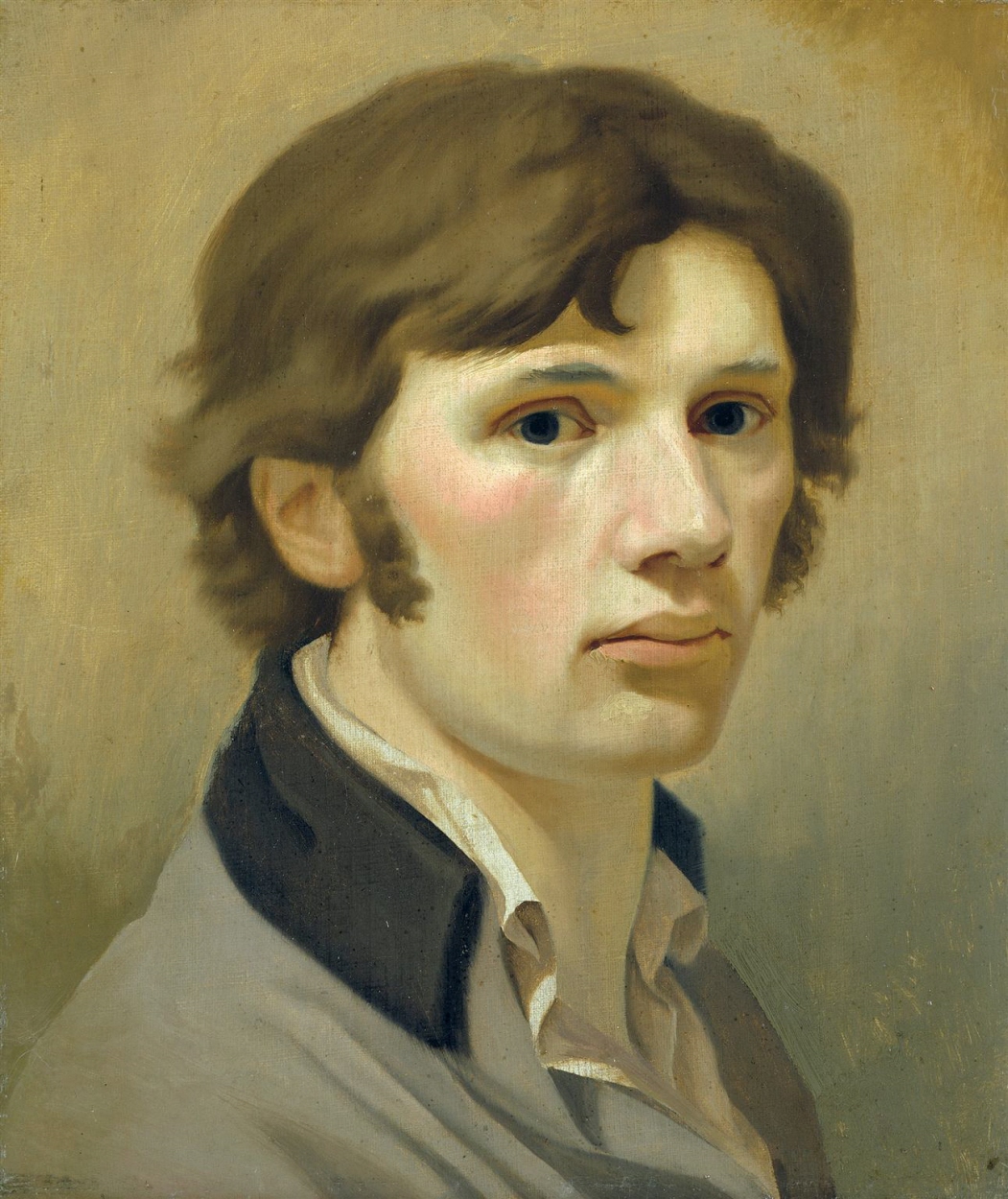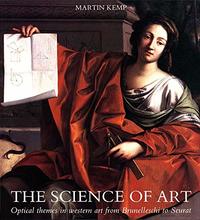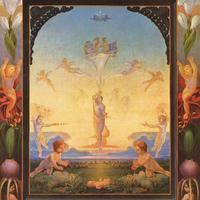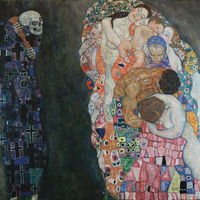More about Philipp Otto Runge
- All
- Info
- Shop
Works by Philipp Otto Runge
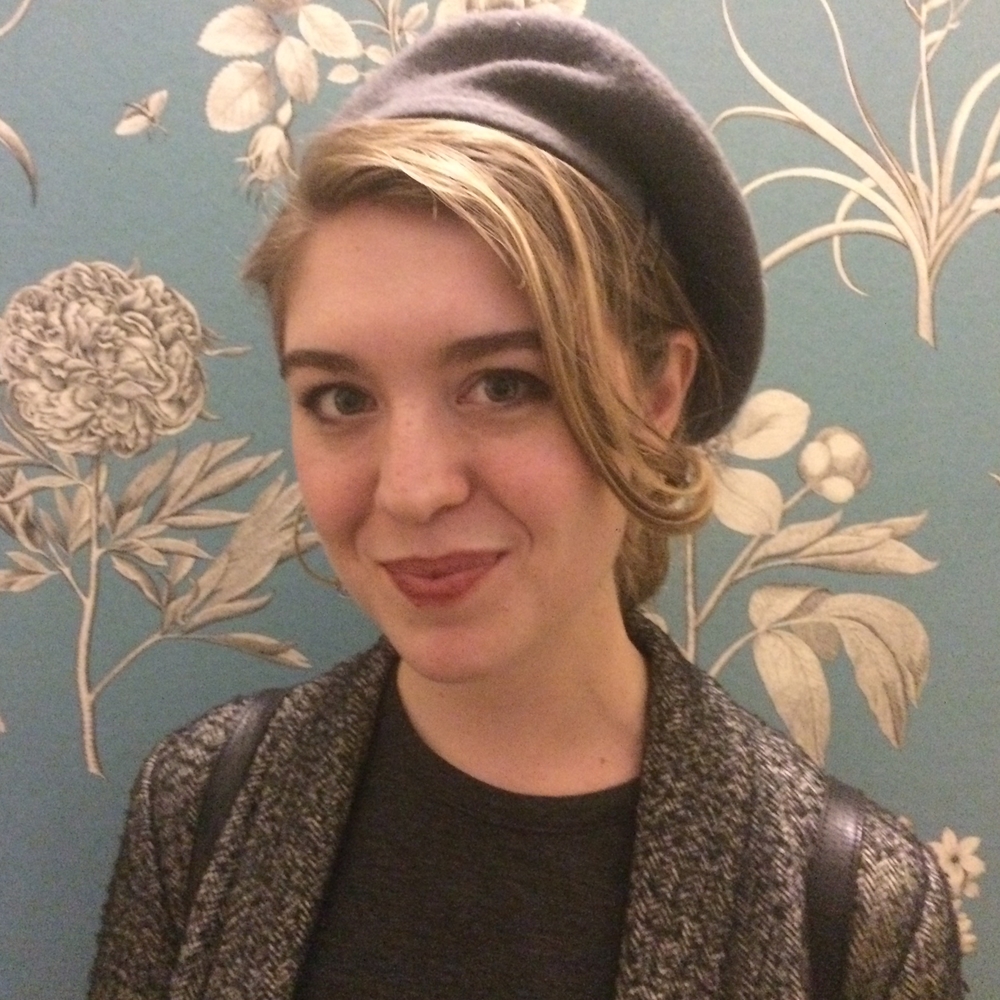
Contributor
Philipp Otto Runge had big dreams, but due to his early death from tuberculosis at 33, was tragically never quite able to bring them to fruition.
Despite his short career, Runge still managed to carve a space out for himself as one of the most important artists of German Romanticism, alongside his good friend, the landscape painter Caspar David Friedrich. Born to a deeply religious family of shipbuilders in Wolgast, Runge received no artistic training whatsoever before the age of 20, when he enrolled in his first-ever drawing lessons. Eventually he would pack up and move to Copenhagen to study at The Royal Academy of Fine Arts, thanks to the patronage and encouragement of his most enthusiastic supporter, his elder brother Daniel. At the Royal Academy, he was taught to draw and paint in the Neoclassical style typical of the time, but soon grew bored of the rigid traditionalism of his academic curriculum, declaring in 1802 that he thought history painting (considered the highest of high art at the time) was so last century. It was out, and according to Runge, something he termed the “new landscape” was in. Although he was totally right (Neoclassicism would gradually be phased out as the 19th century progressed, while Romanticism, with its heavy emphasis on subjective states and the wonders of nature, would become all the rage), his dramatic renunciation might have had just a little bit to do with his feelings of disappointment after submitting a drawing done in the Neoclassical style to an art contest in 1801. Needless to say, he didn’t win, and from that point on he decided to write off Neoclassicism entirely.
Instead, he committed himself fully to his “new landscapes,” in which he sought to express through his own personalized iconography (consisting mainly of flowers, children, and the symbolic use of color) what he saw as the essential unity of humanity, nature, and the divine. Although raised Lutheran, Runge’s view of nature, like that of many Romantics, verged on the pantheistic: he sought in his art not to literally replicate nature, but rather to express through symbolism his sense of a divinity suffusing every facet of the natural world. These ideas culminated in an ambitious project which he worked on right up until his death: his Tageszeiten, a series of four artworks meant to represent the times of day, which in his worldview also corresponded to the four seasons. For eight years, Runge obsessively drafted and redrafted his preparation drawings for the project, but sadly was only able to convert one, The Morning, into color before he succumbed to tuberculosis in 1810. Even then he wasn’t satisfied—in fact, he disliked the completed painting so much that he ordered it to be destroyed after his death. He’d originally had grand plans for the paintings; one was meant to be hung on each wall of a Gothic chapel built specifically for that purpose, viewed to the accompaniment of music and poetry readings by his friend, the author Ludwig Tieck. Runge’s hope was to create a gesamtkunstwerk, which means “total work of art” and refers to the fusion of multiple forms (literature, visual arts, architecture, music, dance, etc.) into one artwork. Although the term wouldn’t be popularized until the mid-19th century by the composer Richard Wagner (and he, naturally, used it to refer to his own form of choice: opera), many of the early Romantics were fascinated by this idea of unifying multiple artforms into one cohesive piece. Runge, however, was one of the first to actually try to put these high-flown theories into practice by merging poetry, architecture, music, and painting into a single project, even if his untimely death meant that his grand plans would remain tragically incomplete.
In addition to drawing and painting, Runge also dabbled in the applied arts, designing book covers, playing cards, and even the architectural plans for a tomb, ornately decorated with plantlike designs in a style anticipating the Art Nouveau movement. From the age of 13, he made paper cut-out silhouettes with his mother on the days he stayed home from school—and since his childhood was ridden with various illnesses, he ended up getting a lot of practice, eventually becoming a master of the form. He also recorded two German folktales toward the end of his life, "The Fisherman and His Wife" and "The Juniper Tree", both of which were included in the first edition of "Grimms’ Fairy Tales" in 1812. While many of the original tales of the brothers Grimm are notoriously gruesome (before being Disneyfied, of course), "The Juniper Tree" is actually one of the most horrifying of all, containing instances of child abuse, murder, and a bit of cannibalism thrown in for good measure. If it wasn’t for Runge, we wouldn’t have access to that story today, so, uh...we should thank him for that, I guess? I’m not sure if that’s what the world needed, but he did a lot of other cool stuff, so we’ll let him off the hook for this one.
Gruesome children’s stories aside, Runge’s theoretical writings, particularly his "Color Sphere" (1810), are considered to be just as important to the art world as his paintings. Runge was completely obsessed with the symbolic possibilities of color, and corresponded at length with his close friend Johann Wolfgang von Goethe on the topic. Both men believed that color had the potential to directly stimulate a person’s emotions, making them a powerful symbolic force in art. For Goethe, who was not only a super famous writer but also a kinda famous scientist, there were four primary colors that directly corresponded to the four humors (aka bodily fluids), a concept passed down from ancient medicine. These humors were believed to correspond to different moods, influencing people’s overall temperaments depending on how much of each humor they had in their body. For Goethe, each humor also had a primary color attached to it; when a person saw said color, the associated humor would be stimulated, thus affecting their mood. Runge, like his friend Goethe, believed that primary colors had the power to directly stimulate the emotions, but for him there were three, not four: red, yellow, and blue. Sound familiar? That’s because many people still use a version of Runge’s color system today. In fact, if you’ve ever taken a basic art class, chances are you learned these very same primary colors in school.
Although fairly well-known during his lifetime, Runge was all but forgotten until about a century after his death. He was revived in the early 20th century by members of the Bauhaus school, such as Paul Klee, whose painting Flower Myth (1918) appears to have been inspired, at least in part, by Runge’s The Morning, and Johannes Itten, who reworked Runge’s color sphere into his own color system, called the “color star,” in 1921. Parallels with Runge’s ideas on the symbolic qualities of color can also be found in the writings of Wassily Kandinsky, another teacher at the Bauhaus, although he described colors as producing “spiritual vibrations” rather than emotions (isn’t that just a fancy way of saying “feelings” though?). Runge, like Kandinsky, was rumored to have synesthesia, which might account at least in part for their similar associations between color and mood.
Although none of Runge’s paintings reached the iconic status of, say, Freidrich’s Wanderer above the Sea of Fog (1818), he was a key player in the intellectual climate leading up to German Romanticism, and exerted a significant amount of influence on the development of modern art in the 20th century. And if it hadn’t been for the tuberculosis, who knows what else might have happened? Maybe he would have finished that gesamtkunstwerk after all.
Sources
- Aichele, K. Porter. “Paul Klee’s ‘Flower Myth’: Themes from German Romanticism Reinterpreted.” Notes in the History of Art 8, no. 3 (1989): 16-29.
- Brown, Hilda Meldrum. The Quest for the Gesamtkunstwerk & Richard Wagner. Oxford: Oxford University Press, 2016.
- Burton, David. “Red, Yellow, and Blue: The Historical Origin of Color Systems.” Art Education 45, no. 6 (1992): 39-44.
- “Color - Bauhaus.” The Getty Research Institute. Accessed May 13, 2020. https://www.getty.edu/research/exhibitions_events/exhibitions/bauhaus/n….
- “The Fisherman and His Wife: Jacob and Wilhelm Grimm.” University of Pittsburgh Accessed May 13, 2020. https://www.pitt.edu/~dash/grimm019.html.
- “Gesamtkunstwerk.” The Art Story. Accessed May 13, 2020. https://www.theartstory.org/definition/gesamtkunstwerk/.
- “The Juniper Tree: Jacob and Wilhelm Grimm.” University of Pittsburgh. Accessed May 13 2020. https://www.pitt.edu/~dash/grimm047.html.
- Littlejohns, Richard. “Philipp Otto Runge’s ‘Tageszeiten’ and Their Relationship to Romantic Nature Philosophy.” Studies in Romanticism 42, no. 1 (2003): 55-74.
- Maslova-Levin, Elena. “Kandinsky on the inner meanings of colours.” Sonnets in Colour (blog). July 10, 2015. http://sonnetsincolour.org/2015/07/kandinsky-on-the-inner-meanings-of- colours/.
- Neumeyer, Alfred. “On German Romanticism and Runge.” The Journal of Aesthetic Education 7, no. 1 (1973): 100-102.
- “Philipp Otto Runge’s Times of Day.” The Getty Research Institute. Accessed May 12, 2020. https://www.getty.edu/research/special_collections/notable/runge.html.
- “The Small Morning.” Web Gallery of Art. Accessed May 12, 2020. https://www.wga.hu/html_m/r/runge/3morning.html.
Featured Content
Here is what Wikipedia says about Philipp Otto Runge
Philipp Otto Runge (
German: [ˈʁʊŋə]; 1777–1810) was a German artist, draftsman, painter, and color theorist. Runge and Caspar David Friedrich are often regarded as the leading painters of the German Romantic movement. He is frequently compared with William Blake by art historians, although Runge's short ten-year career is not easy to equate to Blake's career. By all accounts he had a brilliant mind and was well versed in the literature and philosophy of his time. He was a prolific letter writer and maintained correspondences and friendships with contemporaries such as Carl Ludwig Heinrich Berger, Caspar David Friedrich, Johann Wolfgang von Goethe, Friedrich Wilhelm Joseph Schelling, Henrik Steffens, and Ludwig Tieck. His paintings are often laden symbolism and allegories. For eight years he planned and refined his seminal project, Tageszeiten (Times of Day), four monumental paintings 50 square meters each, which in turn were only part of a larger collaborative Gesamtkunstwerk that was to include poetry, music, and architecture, but remained unrealized at the time of his death. With it he aspired to abandon the traditional iconography of Christianity in European art and find a new expression for spiritual values through symbolism in landscapes. One historian stated "In Runge's painting we are clearly dealing with the attempt to present contemporary philosophy in art." He wrote an influential volume on color theory in 1808, Sphere of Colors, that was published the same year he died.
Runge was born in 1777 in Wolgast, a town in northeast Germany on the Baltic Sea (Swedish Pomerania at that time). He contracted pulmonary tuberculosis at an early age and was in frail health throughout his life. As a youth he attended a school headed by Ludwig Gotthard Kosegarten. His father was a successful merchant and ship owner and Philipp and his older brother Daniel were groomed to follow him in his business. Daniel moved to Hamburg to manage a branch of the family business and Philipp soon followed to serve as an apprentice (ca. 1793 – 96). There he began making contact with poets, publishers, and art collectors such as Matthias Claudius, Friedrich Gottlieb Klopstock, Justus Perthes, and Johannes Michael Speckter who encouraged Runge in the arts, philosophy, and intellectual interests. He started taking drawing lessons in Hamburg in 1797 with Heinrich Joachim Herterich and Gerdt Hardorff the Elder and it was only after a several years in Hamburg, in his early twenties, that Runge decided on a career as an artist.
Runge studied painting for three years at the Copenhagen Academy (now the Royal Danish Academy of Fine Arts), from 1798 to1801 with Jens Juel and Nicolai Abildgaard, where Caspar David Friedrich, three years his senior, had recently preceded him. Runge then attended the Dresden Academy of Fine Arts from 1801 to 1804 studying with Anton Graff and making contact with a broader circle of figures in the burgeoning Romantic movement. The poet and writer Ludwig Tieck was particularly influential in introducing Runge to new literature and the mystical ideas of Jakob Böhme and Novalis. Runge met Pauline Bassenge in Dresden in 1801 when she was 16 years old. They were married in Dresden on April 3, 1804, and soon moved back to Hamburg. They had four children, the youngest born after Runge's death. Runge died of consumption (tuberculosis) in 1810, at the age 33, his life's work spanning little more than ten years. Much of his surviving work was donated to the Hamburger Kunsthalle by his widow Pauline Runge née Bassenge in 1872.
Check out the full Wikipedia article about Philipp Otto Runge

